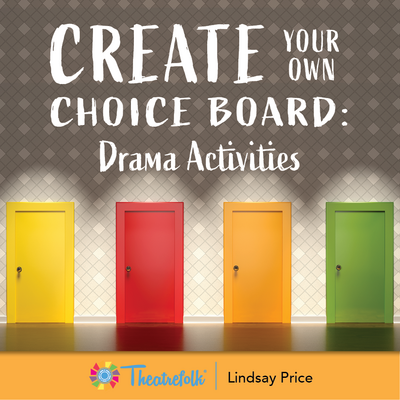There exists in everyone the potential for good or evil. Laramie Dean's adaptation of Dracula asks the question: How much would it take to bring out the darkness inside of you?

Exercise: Effective Peer Feedback
Do your students know how to give effective peer feedback? If not, they may not know what that actually looks like. If they don’t know what effective peer feedback is, how can they benefit from giving and receiving it?
The following exercise will help your students identify effective peer feedback, and then practice giving effective feedback to each other.
Part 1: What is effective peer feedback?
1. Start with a group discussion. Ask your students to finish the following sentences: “Effective peer feedback is…” and “Effective peer feedback is not…” Write down their suggestions on a large piece of paper or whiteboard for the class to see. For example:
- Effective peer feedback is…
- Useful/meant to help students improve
- Action-oriented (able to put the feedback to use next time)
- Thoughtful
- Specific
- Unbiased
- Effective peer feedback is not…
- Rude or insulting
- A means to put people down
- Name-calling
- Vague
- Only complimentary
2. At some point, a student will likely suggest that feedback should always be positive. Ask your students: Is this true? Should feedback always be positive? Can feedback be negative? How can students phrase negative feedback in a way that isn’t hurtful?
3. Have students give examples of feedback for each suggestion. For example, the feedback “I enjoyed your performance” is flattering and nice to hear, but it’s not particularly useful. Students need to give specific feedback. They can certainly offer praise, but they need to specify what it’s for. What about the performance did your students enjoy? What did the performers do that worked well (that they can do again next time) or didn’t work well (that they can avoid or improve on next time)?
Distance Learning Adaptation
If you are able to share your screen, open a blank word processing document to record students’ suggestions for effective peer feedback.
Alternatively, assign one student to act as scribe and have them take notes and upload them to the class website, or email them to the rest of the students. You can assign a different note-taker each class, or offer bonus marks for volunteering to take notes.
Part 2: Putting it into practice
1. Select an improv game, such as Scenes From a Bag. I like to choose an improv game that often results in funny scenes, so students are forced to actively observe and think about the scene, not just passively watch and laugh. (Of course, students can still laugh while they’re actively observing!)
2. Divide students into pairs, or let students select partners.
3. Select a pair to perform the improv game.
4. Tell the pairs watching to observe and think about what feedback they would give – one comment for each performer. You will pick a pair to give feedback directly to the performers.
5. After the pair performs, select another pair to give the performers feedback. Each partner will give two pieces of feedback – one for each performing partner – for a total of four pieces of feedback per pair. All feedback must fit the “effective feedback” criteria that students identified in Part 1 – specific, thoughtful, useful, etc.
6. The pair giving feedback then becomes the performing pair, and another pair becomes the feedback pair. Continue until each pair has had the opportunity to perform and give feedback.
7. After all students have performed and given feedback, they will complete individual reflections.
Distance Learning Adaptation
Follow the game instruction as written, using a video conferencing program such as Zoom.
For giving feedback, choose one of the following options:
- Have pairs perform and give feedback verbally, live in front of the full class;
- Have pairs perform live in front of the full class, but type up feedback and email it to their assigned pair (copying you in on the feedback)
- Rather than rotating pairs as originally directed, group two pairs together into groups of four, and assign each group of four a virtual meeting room where one pair can perform and the other pair give feedback, and then the pairs will switch.
Related Articles
Create Your Own Choice Board: Drama Activities
by Lindsay Price
Choice boards give students the opportunity to choose how they want to learn a particular subject. Create Your Own Choice Boards: Drama Activities can help encourage your students' independence by allowing them to take an active role in their learning.
Distance Learning
by Christian Kiley
A play about trying to survive and thrive in a virtual classroom.




